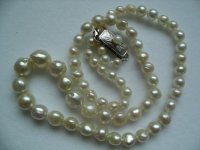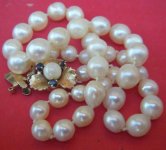Lulu
New Member
- Joined
- Mar 14, 2012
- Messages
- 109
My turn to ask: what are these?!
These come down to me from my great grandmother and my mom had told me they were South Sea pearls (from nanyang). But now that I've seen some SSP in person, these look nothing like those.
I'm guessing that these are from the 1930's or before. I do not know if the clasp is original. I'm guessing based on the metal and the marking, that the clasp is made of "german silver" which seems to have been a popular clasp material in Asia at the time, but I also know that grandma said there once were more pearls and the necklace was longer. I wouldn't be surprised if the necklace had been broken apart way back when during the various times when there was one form of turmoil or another in the area.
Any guesses as to what these might be? I'm guessing freshwater by the patches of metallic lustre, shape and pitting, but I didn't think the Chinese had freshwater pearl cultivation at the time. The smallest on the strand is about 4mm and the largest is about 8 mm x 11 mm.
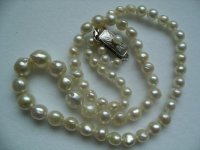
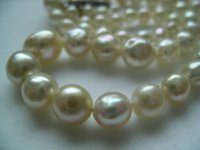
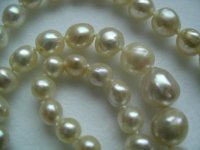
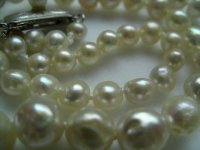
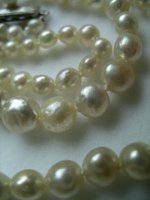
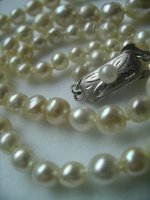
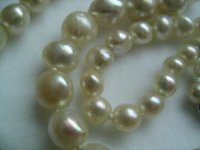
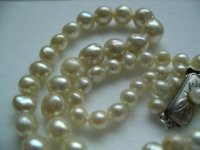
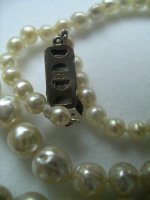
These come down to me from my great grandmother and my mom had told me they were South Sea pearls (from nanyang). But now that I've seen some SSP in person, these look nothing like those.
I'm guessing that these are from the 1930's or before. I do not know if the clasp is original. I'm guessing based on the metal and the marking, that the clasp is made of "german silver" which seems to have been a popular clasp material in Asia at the time, but I also know that grandma said there once were more pearls and the necklace was longer. I wouldn't be surprised if the necklace had been broken apart way back when during the various times when there was one form of turmoil or another in the area.
Any guesses as to what these might be? I'm guessing freshwater by the patches of metallic lustre, shape and pitting, but I didn't think the Chinese had freshwater pearl cultivation at the time. The smallest on the strand is about 4mm and the largest is about 8 mm x 11 mm.










